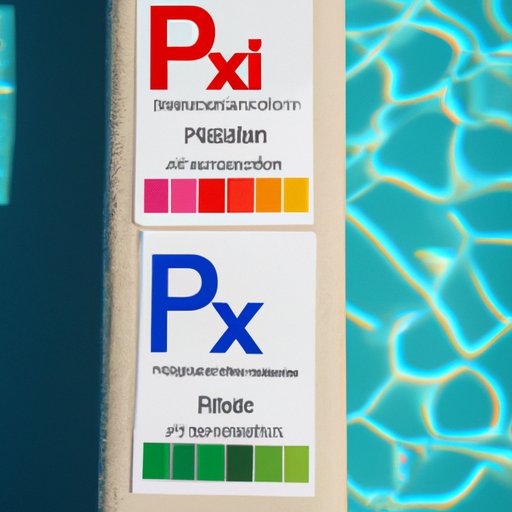
How to Raise Pool pH: A Comprehensive Guide
Swimming pools are an incredible place to relax, spend time with family and friends, and cool off in the summer heat. However, keeping a pool clean and maintained can be a challenge, particularly when it comes to pH balance. Low pH levels can lead to various problems, from skin and eye irritation to damage to the pool equipment and surface. In this article, we will provide solutions to this problem and help you learn how to raise the pH levels in your pool.
Understanding pH Levels
The water’s pH levels in your pool refer to how acidic or alkaline the water is. The pH scale measures this level from 0 to 14, with 7 considered neutral. Anything below 7 is considered acidic, while levels above 7 are alkaline. Ideally, a pool’s pH level should range between 7.2 and 7.8, making it a slightly alkaline pool.
To test pH levels, use a testing kit with strips or drops. Follow the manufacturer’s instructions to obtain a reading. If the reading is below 7.2, the water is too acidic, and if it’s above 7.8, the water is too alkaline.
Importance of Maintaining pH Balance
A balanced pH level is essential for maintaining healthy pool water. Chemically balanced water is easier for swimmers to tolerate and is less likely to cause eye and skin irritation. Additionally, a balanced pH level can help control other chemical levels, like chlorine, and prevent the build-up of water minerals on the pool’s surface, such as calcium.
Water with an imbalanced pH level can also cause damage to the pool’s equipment, like the filters and heaters. This damage can lead to costly repairs or replacement.
Ways to Raise pH Levels
There are various ways to increase the pH levels in your pool. The most commonly used methods include sodium carbonate (soda ash) and baking soda. Soda ash is a powerful chemical that can increase pH levels quickly. However, it should be added slowly and carefully to avoid over-treating the pool.
Baking soda is milder than soda ash and can also raise pH levels; it acts as a buffer and will help prevent the pH from dropping again after adjusting. It’s better to use baking soda when the pH levels aren’t too acidic as large doses may lead to high alkalinity.
Soda ash can be added by sprinkling half a pound over the pool surface per 10,000 gallons of water. To achieve the best results, ensure that the pool circulating system is running so that the soda ash is distributed evenly across the pool. Wait at least four hours before retesting the pH levels, and repeat the process if necessary.
Baking soda is added to the pool at a rate of 1.5 pounds per 10,000 gallons of water. Again, ensure that the pool’s circulation system is running before adding the baking soda. Wait several hours before retesting again and repeating the process as needed.
If you prefer eco-friendly alternatives, you can use crushed eggshells or borax powder to raise pH levels. Crushed eggshells, containing calcium carbonate, are effective in increasing the pH of your pool water. Borax powder can also be used as a pH balancer because it increases pH and total alkalinity without affecting the water’s calcium hardness.
Circulation and Filtration
It’s essential to maintain proper water circulation and filtration to keep the pH level stable. Ensure the pool’s skimmer and pump are working correctly. Dirt, leaves, and other debris can cause pH imbalances, so regularly clean skimmers, and filters to avoid such contaminants.
Inspect the pool’s filtration system regularly and clean or backwash if necessary. Poor water circulation leads to stagnant and uneven pool surfaces susceptible to calcium, algae buildup, and other pool-related issues.
Common Mistakes to Avoid
You should avoid certain common mistakes that can lead to high or low pH levels. Using too many chemicals or not adding enough can cause the pH level to fluctuate. Before adding chemicals, consult a professional or use a pool chemical calculator to determine the appropriate amount.
Over-shocking the pool, also known as chlorinating the pool, can also cause pH imbalances, especially if you add lots of chlorine at once. The chlorine will start to decrease the pH level in the pool. It’s recommended that pool owners avoid shocking their pool more than once per week, especially during the swimming season.
Ongoing Pool Maintenance
Maintaining a balanced pH level and other chemical levels requires ongoing effort. Regular testing of pH levels is the most crucial aspect of ongoing maintenance. It’s recommended to check the pH levels of your pool once per week. More frequently, you may have to measure in warm weather or heavy pool use conditions.
You should balance the pool’s other chemical levels, like chlorine and alkalinity, to achieve a perfect level of pH balance. Diluted acid can be used for the treatment of alkaline water. Similarly, chlorine shocks can be used for regular cleaning or maintenance purposes.
Conclusion
Keeping your pool water’s chemical balance maintained, mainly pH levels, is essential for safe and healthy use. A balanced pH level also helps protect your pool’s equipment and surfaces. Use these pool-raising tips to keep your pool water sparkling clean and optimal for swimming. Regular testing, proper circulation, and ongoing maintenance can keep your pool clean, safe and enjoyable all year round.




